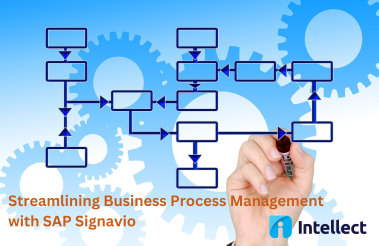Key Considerations for Choosing the Best Option for Your Business
Technology is advancing faster than ever, making it essential to choose the right tools to ensure your solutions are future-proofed. In the SAP ecosystem, Restful Application Programming and Cloud Application Programming are two popular technology models. Understanding the details and best uses of each is crucial for staying ahead in this rapidly evolving field.
RAP or CAP: Which Should Your Business Follow?
When choosing between RAP (Restful Application Programming) and CAP (Cloud Application Programming), it’s crucial to evaluate which model aligns best with your business environment and objectives. RAP is designed for SAP-centric environments, offering a streamlined development process with Core Data Services (CDS), enhanced ABAP, business objects (BO), and business services, all integrated within Eclipse-based ABAP Development Tools (ADT). This makes RAP ideal for businesses deeply integrated with SAP, particularly those using SAP S/4HANA. On the other hand, CAP is tailored for building enterprise-grade, cloud-native applications and services, leveraging languages, libraries, and tools to support domain-driven design. CAP integrates well with both open-source and SAP technologies, making it a great choice for businesses seeking flexibility, scalability, and rapid development in a diverse technological landscape. Understanding these models will help you determine the most suitable approach for your business.
What is Restful ABAP Development (RAP)
The ABAP RESTful Application Programming Model (RAP) offers a comprehensive framework for streamlined, end-to-end development of SAP HANA-optimized OData services, crucial for Fiori applications. Moreover, RAP supports creating various Fiori apps and publishing Web APIs, employing several key technologies and frameworks.
RAP provides a standardized development workflow, integrating Core Data Services (CDS), an enhanced ABAP language, business objects (BO), business services, and Eclipse-based ABAP Development Tools (ADT). This framework ensures efficient and consistent development processes.
The following image encapsulates these key elements:

Core Data Services (CDS):
- Functionality: CDS allows for the definition and consumption of rich data models within the SAP ecosystem. It provides a high-level, declarative way to create semantic data models that are optimized for performance and consistency.
- Advantages: Simplifies data modeling and ensures uniformity across applications by allowing developers to define data structures and relationships clearly.
Service Model Infrastructure:
- Functionality: This component is responsible for creating OData services, which are crucial for building Fiori applications and exposing APIs.
- Advantages: Enables the binding of CDS views to OData services, facilitating the creation and management of these services without extensive coding.
ABAP-based Application Services:
- Functionality: These services allow for the implementation of custom business logic using ABAP, SAP’s primary programming language.
- Advantages: Provides the flexibility to develop complex business processes and rules, ensuring applications meet specific business needs while leveraging SAP’s robust backend capabilities.
SAPUI5-based User Interfaces:
- Functionality: SAPUI5 is a UI development toolkit for HTML5 used to build responsive, cross-platform web applications.
- Advantages: Seamlessly integrates with backend services, providing a cohesive development experience and ensuring that the user interface is tightly coupled with the underlying business logic.
Key Features and Benefits
What is Cloud Application Programming (CAP)
The Cloud Application Programming (CAP) model is a comprehensive framework with languages, libraries, and tools for building enterprise-grade services and applications. Furthermore, it offers a structured ‘golden path’ with best practices and out-of-the-box solutions.
Key Features of CAP
Focus on Domain-Centric Development
- Primary Objective: CAP prioritizes domain-specific development, allowing developers to concentrate on the business logic and domain models rather than getting bogged down by technical complexities.
- Accelerated Development: By emphasizing domain-driven design, CAP speeds up the development process and ensures that applications are robust and aligned with business needs.
Out-of-the-Box Solutions
- Efficiency: CAP provides a wealth of ready-made solutions for recurring tasks, which helps developers avoid reinventing the wheel. This includes predefined modules and components that address common requirements.
- Best Practices: The framework guides developers through best practices, ensuring that the solutions implemented are efficient, secure, and maintainable.
Integration with Open-Source and SAP Technologies
- Diverse Technology Stack: CAP integrates a mix of well-established open-source technologies and proprietary SAP technologies. This blend ensures that developers have access to a versatile and powerful toolkit.
- Broad Adoption: The use of widely adopted technologies ensures compatibility and support, making it easier for developers to find resources and community support.
Benefits of CAP
Safeguarding Investments:
Future-Proof: CAP is designed to protect investments by enabling applications to adapt to rapidly changing cloud technologies. This ensures that applications remain relevant and functional as the technological landscape evolves.
Scalability: The framework supports scalable solutions, making it suitable for growing businesses and increasing data demands.
Enhanced Developer Productivity:
Simplified Development: By providing out-of-the-box solutions and following best practices, CAP simplifies the development process. Developers can focus on building features that add value to the business rather than dealing with low-level technical details.
Consistency: The structured approach and standardized practices lead to more consistent and reliable applications.
Rich Ecosystem:
Comprehensive Tools: CAP includes a wide range of tools that assist in various aspects of application development, from coding and testing to deployment and maintenance.
Community and Support: The framework benefits from a robust community and extensive documentation, offering support and resources to developers.

What differs CAP from RAP
Concluding the above deep explanations on the two development approaches, let us now look into the key differences of them.













